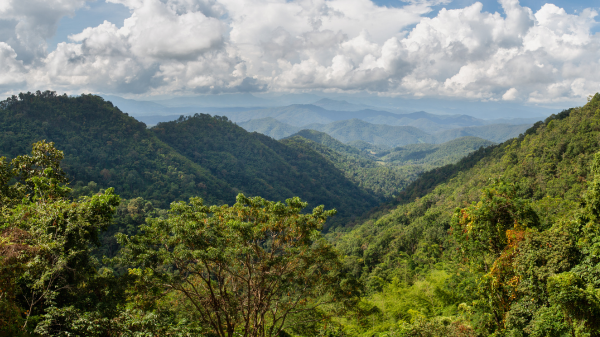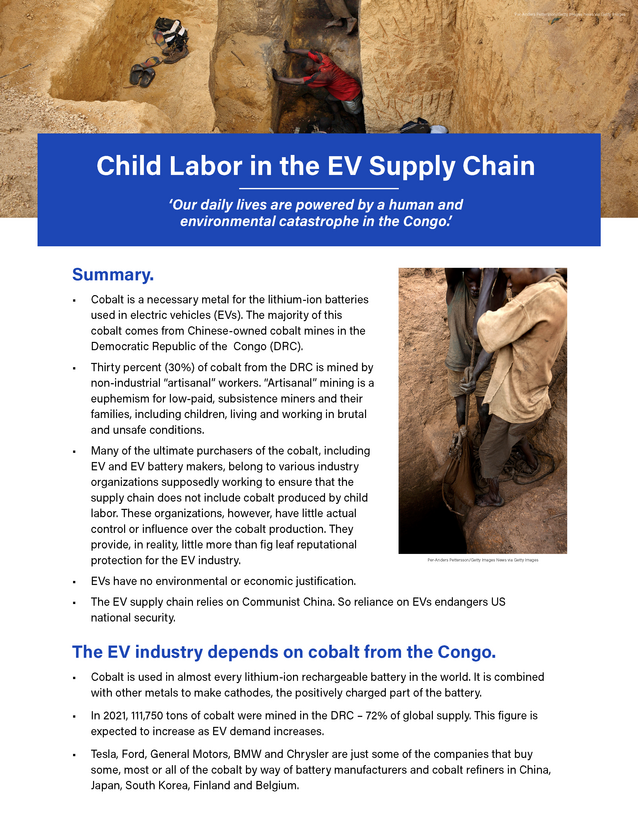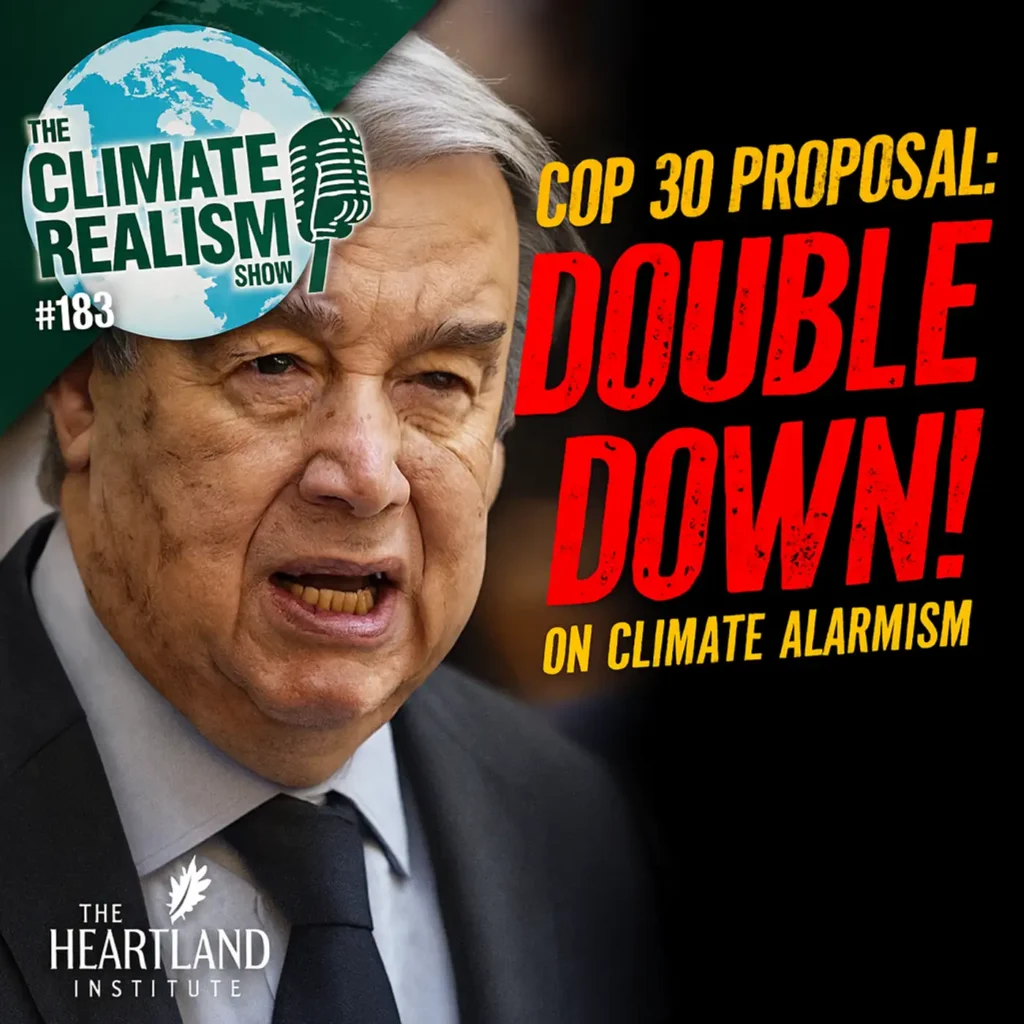YOU SHOULD SUBSCRIBE TO CLIMATE CHANGE WEEKLY.
IN THIS ISSUE:
- Illegal ESG Collusion Behind Decarbonization Efforts
- Video of the Week: ‘Ocean Acidification’ Doesn’t Mean What You Think It Means
- Cleaner Shipping Fuel Driving Warmer Oceans, Says Study
- Rising Seas Not Resulting in Disappearing Islands
- Podcast of the Week: Heatwave Alarm Season is Here, Same Old Climate Claims, Different Year – The Climate Realism Show #114
- Plants Remove More CO2 Than Previously Thought
- Climate Comedy
- Recommended Sites
Watch ALL the Presentations by the ALL-STARS of Climate Realism at the Archive of Heartland’s 15 Climate Conferences
Illegal ESG Collusion Behind Decarbonization Efforts

In mid-June, the U.S. House of Representatives Judiciary Committee released an interim report describing collusion between radical environmental groups, progressive activists, and corporate interests, especially in the financial sector, to impose Environment, Social, and Governance goals on the American people. The Judiciary committee is, in part, charged with the “[p]rotection of trade and commerce against unlawful restraints and monopolies.” This includes protecting against collusion which reduces competition, limits consumer choice, and increases prices, in the case at hand, through efforts to decarbonize the economy, in pursuit of environmental and environmental justice demands.
Doctrinaire, elitist adherents of ESG goals view capitalism is a sin against the environment that must be restrained through social engineering to ensure that the social, environmental, and ethical ends they believe are required by a social justice, are adopted and enforced across society. Evidence shows that there is no climate crisis, but ESG pushers use the alleged threat of catastrophic climate change to push progressive ends.
The Heartland Institute was well ahead of the curve in exposing the dangers ESG poses to freedom and economic progress, with our April 2023 study exploring the ways different special interests are colluding to universalize ESG standards – Congress is finally catching up.
Congress used the power of the subpoena to force recalcitrant ESG proponents (which it labels the “climate cartel”) to give up documents detailing their collaborations to promote ESG, and concluded based on the documentation that the various groups are illegally colluding against the interest of the American people by, for example, “forcing companies to slash output of products and services that are critical to Americans’ daily lives.”
The groups colluding, include (not an exhaustive list), per the report:
-
- Climate Action 100+, the Net Zero Asset Managers initiative, and the Glasgow Financial Alliance for Net Zero (GFANZ);
- blue state pension funds like the California Public Employees’ Retirement System
- (CalPERS);
- radical environmental non-profit organizations like Ceres;
- stockholder engagement service providers like As You Sow;
- activist investors like Arjuna Capital, LLC (Arjuna), Trillium Asset Management,
- LLC, Engine No. 1 LP, and Aviva Investors Americas, LLC, which “acquire a minimal ownership stake . . . to stop climate change, not to make a financial profit;”
- the “Big Three” asset managers BlackRock, Inc. (BlackRock), State Street Global Advisors (State Street), and The Vanguard Group, Inc. (Vanguard), who together own 21.9% and vote 24.9% of the shares of the Standard and Poor’s (S&P) 500;
- and the foreign-owned proxy advisory duopoly of Institutional Shareholder Services Inc. (ISS) and Glass, Lewis & Co. (Glass Lewis), which have a combined 90% market share and advise mutual funds controlling more than $27 trillion in assets.
The report says the climate cartel has, among other things:
-
- [D]eclared war on the American way of life [by] … waging “a Global World War” for net zero against disfavored American companies, including those in the fossil fuel, aviation, and farming industries that allow Americans to drive, fly, and eat. It has described Climate Action 100+ as “the global Navy,” and compared Ceres’s efforts to “the Army ground troops” and “an ‘air cover’ strategic and silent bombing campaign by a newly funded division of the Air Force.”
- The climate cartel has agreed to force corporations to “decarbonize.” Members of groups like Climate Action 100+ expressly commit to engage “with the companies in which [they] invest” to make them reach “net zero [greenhouse gas (GHG)] emissions by 2050” by disclosing their carbon emissions, reducing their carbon emissions, and adopting enforcement mechanisms to strengthen these commitments.
- The climate cartel “[r]amp[s] up” and “[e]scalate[s]” pressure against corporations on the “wrong side of climate history.” The climate cartel is “willing to go to the top rung” by filing shareholder resolutions, voting against management, and “replac[ing] board members” with those of its own choosing.
- The climate cartel seeks to “keep fossil fuels in the ground,” raising prices and reducing output for American consumers.
In short, this exhaustively referenced report uses the climate cartel’s own documents and independent research to expose how these groups are colluding through pressure tactics and political influence (politicians and bureaucrats), to force companies to adopt ESG goals that further their social and political aims, to the detriment of many of the companies themselves, consumers, and the general public.
The report concludes:
The Committee’s ongoing investigation into collusion between left-wing activists and major financial institutions has revealed that a climate cartel is working to decarbonize the U.S. economy—with disastrous implications for American consumers. The climate cartel has declared war on our way of life, escalating its attacks on free markets and demanding that companies slash output of the critical products and services that allow Americans to drive, fly, and eat.
The Biden Administration has failed to act upon the climate cartel’s apparent violations of longstanding U.S. antitrust law.
For a government report, it is relatively short, and like The Heartland Institute’s report before it, well worth reading in full. As grim a picture as the Judiciary Committee paints of the collusion to decarbonize the world in pursuit of ESG, I think it actually understates the danger to humanity’s short-term and long-term well-being. ESG is a recipe for equality in squalor—with the exception of the elites in charge of the climate cartel—with poverty and premature death being the end result.
Sources: U.S. House Judiciary Committee; Greenie Watch
NEW: Get Climate at a Glance on your mobile device!
Video of the Week
If you hear the term, “ocean acidification” and that horrifying scene from Dante’s Peak where the lake turns to acid pops into your head, you’re not alone, but allow me to ease your concerns. In this video Heartland Research Fellow Linnea Lueken is going to quickly show why alarmism regarding ocean acidification is misguided at best.
Read the brutal truth about how battery production for electric vehicles cause immense environmental destruction and human tragedy.
Cleaner Shipping Fuel Driving Warmer Oceans, Says Study

Research published in Nature Communications suggest part of the reason for the recent increase in ocean temperatures has nothing to do with climate change or the El Niño cycle, but rather, actions taken by the shipping industry to reduce sulfur levels in shipping fuel, which reduced sun blocking/filtering sulfur dioxide emissions, causing the top layer of the ocean to warm.
Shipping fuel regulations introduced in 2020 have led to a substantial cut in sulfur dioxide (SO2) pollution, but may also have made the ocean warmer by reducing cloud cover, according to a modelling study in a paper published late on Thursday,” wrote Reuters, reporting on the study. “International Maritime Organization (IMO) rules to tackle marine pollution forced shippers to cut their fuel sulfur content to 0.5% from 3.5%, leading to an 80% decline in SO2 emissions, according to a research team led by Tianle Yuan at the University of Maryland.”
Sulfur dioxide forms aerosol droplets that thicken and brighten clouds, directing more solar rays back into space, rather than warming the surface. This research suggests the reduction in shipping fuel emissions alone may be responsible for as much as 80 percent of the “planet’s total net heat update since 2020.” Leaving one to ask, whence the source of recent global warming? Humans? Possibly yes; carbon dioxide emissions, likely not. One thing is sure, climate models fail to account for changes in clouds or factors like sulfur dioxide increases and reductions that can contribute to them.
Discussing the study, Stuart Haszeldine, director of the Edinburgh Climate Change Institute at the University of Edinburgh, who did not contribute to the recent research, told Reuters, “[t]his cooling effect (of SO2) is well understood—and documented episodes have occurred as consequences of several major volcanic eruptions emitting SO2 during the past 2,000 years.”
Source: Reuters; Nature Communications
Rising Seas Not Resulting in Disappearing Islands

A spate of recent articles acknowledges a fact that Climate Realism has long discussed. Most island nations, rather than sinking beneath the waves as seas rise amid modest warming, as predicted by climate alarmists and island profiteers, are, in fact growing.
Writing for The Pipeline, Buck Throckmorton thoroughly debunks claims that recent collapses of houses built on the shores of barrier islands in North Carolina were caused by climate change:
[B]arrier islands … are impermanent deposits of sand, which reshape, move, merge, appear, and disappear due to tides, winds, and storms.
The movement of barrier islands is not due to rising sea levels, it is due to a naturally occurring force called “longshore drift.” Where there are man-made efforts to stabilize barrier islands with jetties and sea walls, this produces other impacts on currents that cause erosion in some waterfront areas and new sand deposits in others. Beach houses in the Outer Banks are not being lost due to rising sea levels, they are being lost due to shifting sands.
Throckmorton also pointed to the disappearance of Tucker’s Island, off the coast of New Jersey, which completely disappeared due to “long-shore drift,” not rising seas.
NOAA describes the impact of long-shore drift, thusly:
Longshore drift may also create or destroy entire barrier islands along a shoreline. A barrier island is a long offshore deposit of sand situated parallel to the coast. As longshore drifts deposit, remove, and redeposit sand, barrier islands constantly change.
Semi-permanent, shifting barrier islands are not the only types of islands not being destroyed by climate change-induced rising seas. Even The New York Times (NYT) was recently forced by reality to admit that coral atolls, long the poster child of rising seas claiming nations, have been expanding and adding land amidst the Earth’s slight recent warming.
As recently as April 2024, with a story titled “Why Time Is Running Out Across the Maldives’ Lovely Little Islands,“ the NYT was still pushing the lie that rising seas threaten dozens of island nations, consisting of hundreds of small coral atolls, with extinction. Reality forced the NYT to reverse itself in the space of just three months. The author of a late June article, “A Surprising Climate Find,” wrote:
Of late, though, scientists have begun telling a surprising new story about these islands. By comparing mid-20th century aerial photos with recent satellite images, they’ve been able to see how the islands have evolved over time. What they found is startling: Even though sea levels have risen, many islands haven’t shrunk. Most, in fact, have been stable. Some have even grown.
The problem with this narrative is that the fact of growing islands during the recent period of climate change is not new news. In fact, as my colleague Linnea Lueken noted in a recent piece, the study the NYT references was published in 2018, six years ago. It found 89 percent of islands in the Pacific and Indian Oceans increased in area or were stable, and only 11 percent showed any sign of contracting.
Indeed, geological understanding of coral atoll growth and demise is not newly discovered.
“Scientists have known for decades, if not more than a hundred years, that atoll islands uniquely change with changing sea levels,” Lueken points out. “Charles Darwin was the first to propose that reefs were many thousands of feet thick, and grow upwards towards the light. He was partially correct, though reality is more complicated than his theory.”
Repeated studies show that what is true of the Maldives, growth amid rising seas, is equally true of the islands that make up Tuvalu and Kiribati, and across the island chains of Micronesia. One well-cited study from 2015 reported that 40 percent of islands in the Pacific and Indian Oceans were stable, and another 40 percent had grown, in recent decades.
Oceans, oceans everywhere, and nowhere can be found the much-bemoaned decline in island nations hyped be climate hucksters with regularity. When even the NYT is forced to admit this truth, you know the climate alarm narrative is in trouble.
Sources: The Pipeline; The New York Times; Climate Realism
Heartland’s Must-read Climate Sites



Podcast of the Week
Yes, it’s that time again kids, panic the American people over heat waves by blaming them on climate change. This past week several news outlets talked about the “Western Heat Wave” and tried to link it to “climate change.” Climate Central was the source of most of these stories with a press release that said: “Between June 5-7, much of the Western United States, Mexico, and Eastern Canada are poised to experience a period of unusually hot conditions made much more likely because of human-caused climate change. During this period, over 229 million people across North America will experience extreme heat made at least three times more likely because of human-caused climate change.”
Subscribe to the Environment & Climate News podcast on Apple Podcasts, iHeart, Spotify or wherever you get your podcasts. And be sure to leave a positive review!
Plants Remove More CO2 Than Previously Thought

New research published in the journal Science suggests global vegetation removes and cycles far more carbon dioxide (CO2) out of and through the atmosphere and biosphere every year than previously estimated.
A team of researchers from various universities and research institutes in the United Kingdom, United States, and Germany undertook a dating from nuclear bomb tests in the 1960s. This analysis found vegetation removes more CO2 from the atmosphere than climate models assume, with the CO2 being stored in short-lived, non-woody tissues.
This is important because assumptions about the longevity of atmospheric CO2 and the atmosphere’s sensitivity to it are the foundation of climate model forecasts of future temperatures and climate conditions. The difference between common assumptions of the global vegetation’s net primary productivity (NPP), the storage of carbon within plant tissues resulting from photosynthesis, and what this research found is significant. The authors’ write:
We combined a new budget of radiocarbon produced by nuclear bomb testing in the 1960s with model simulations to evaluate carbon cycling in terrestrial vegetation. We found that most state-of-the-art vegetation models used in the Coupled Model Intercomparison Project underestimated the radiocarbon accumulation in vegetation biomass. Our findings, combined with constraints on vegetation carbon stocks and productivity trends, imply that net primary productivity is likely at least 80 petagrams of carbon per year presently, compared with the 43 to 76 petagrams per year predicted by current models.
In other words, the Earth’s plant life removes and, at least temporarily, stores from 5 percent to 47 percent more carbon dioxide in vegetation than climate models assume. Yet getting the carbon budget right is critical to understanding the short- and long-term impacts of CO2 on temperatures and climate, and what policies, if any, might be justified to reduce CO2 emissions. Policies should be informed by sound science, if not necessarily dictated by scientific findings, the latter being shaped by myriad considerations, including the trade-offs inherent to different actions, and the desires of populations in democratically governed countries.
Sources: SciTechDaily; Science
Climate Comedy
Via The Babylon Bee






